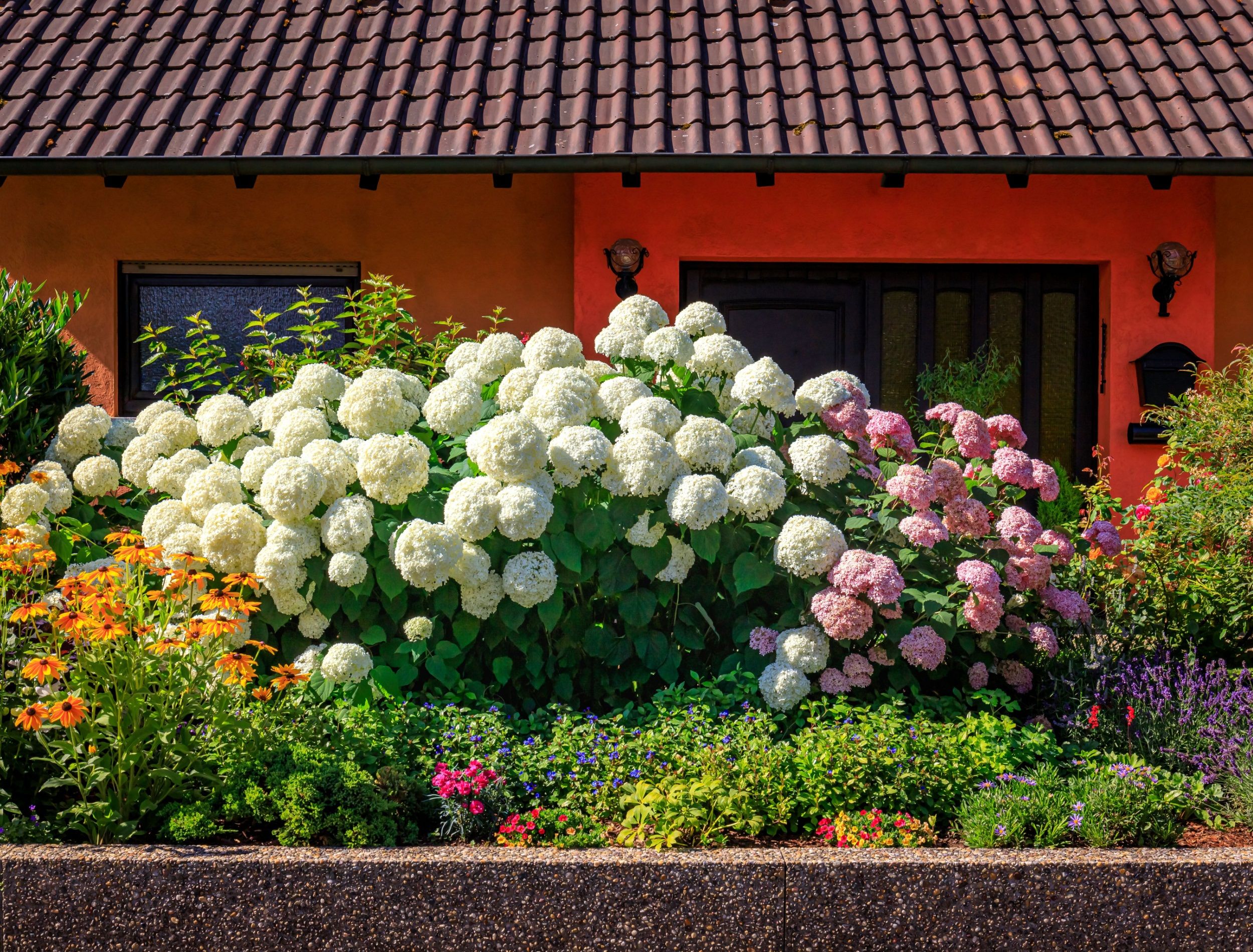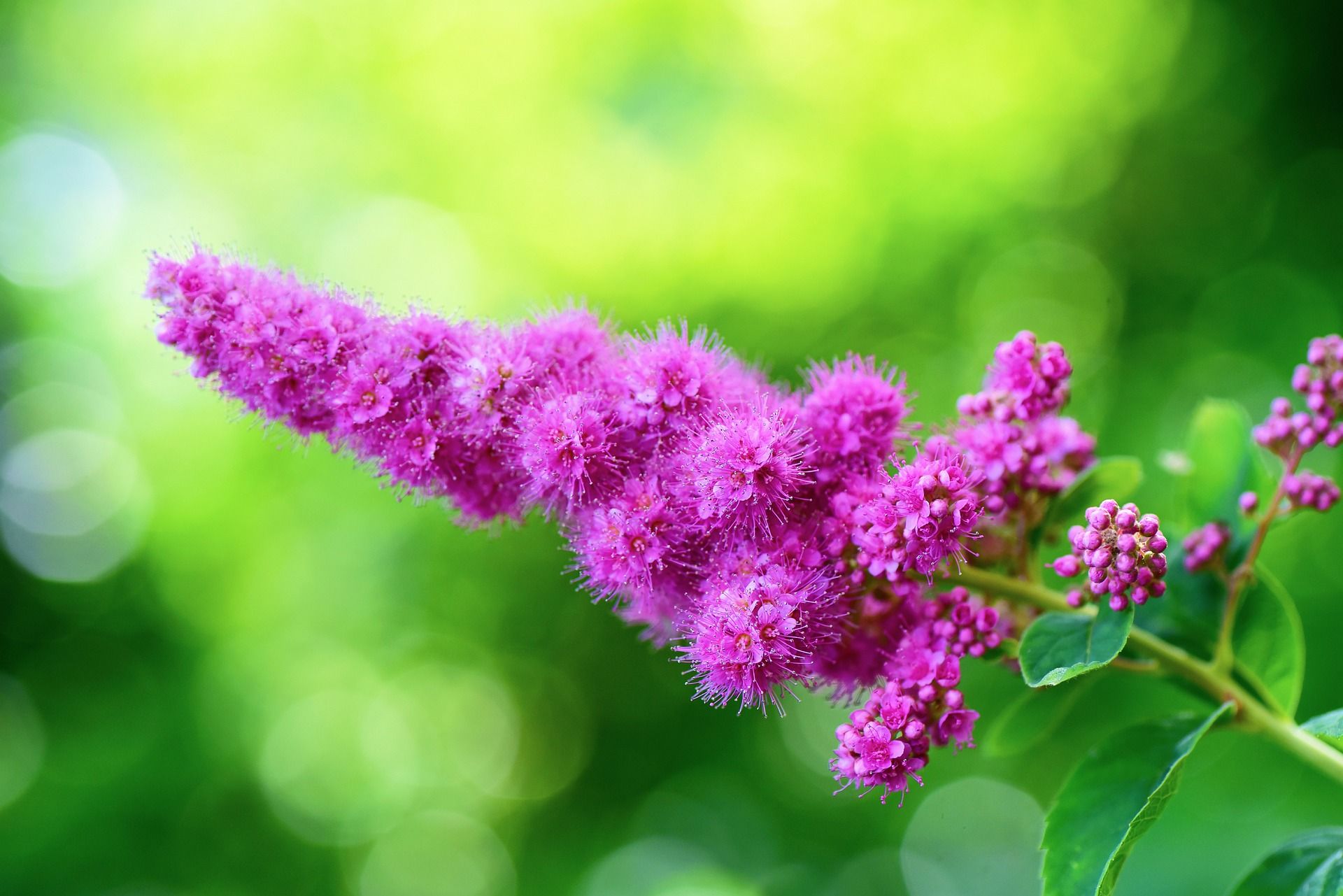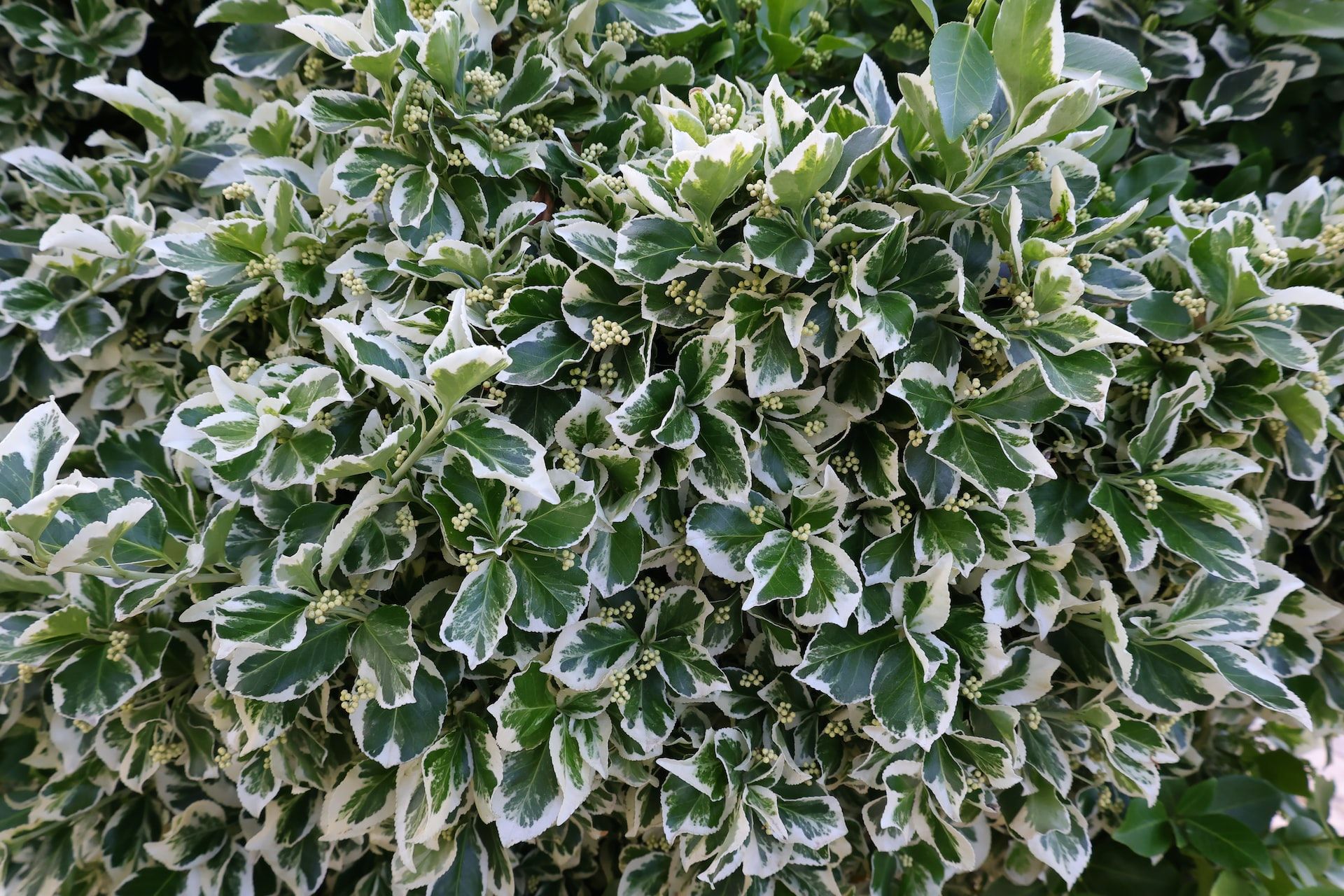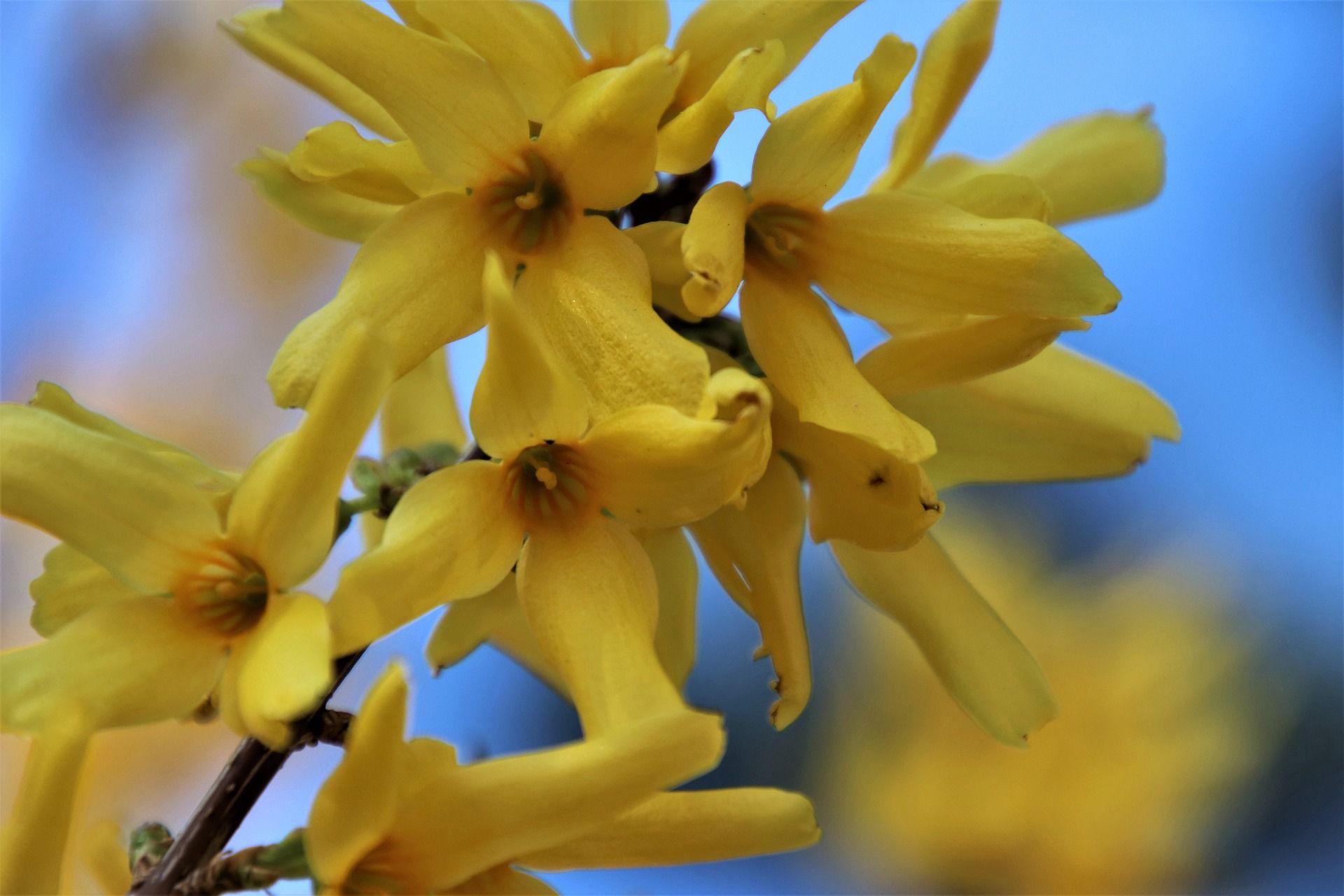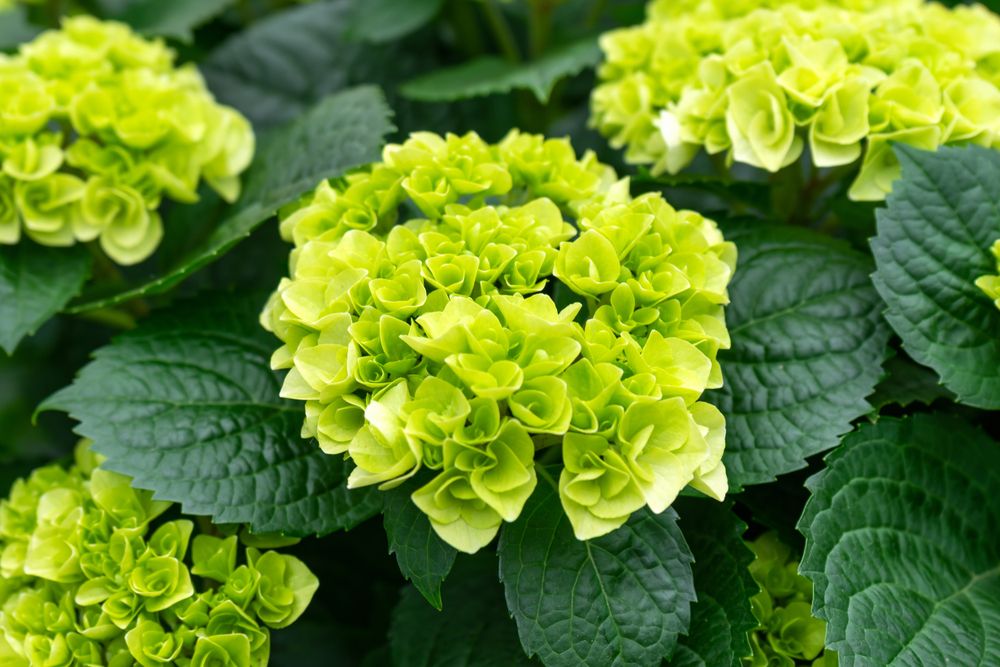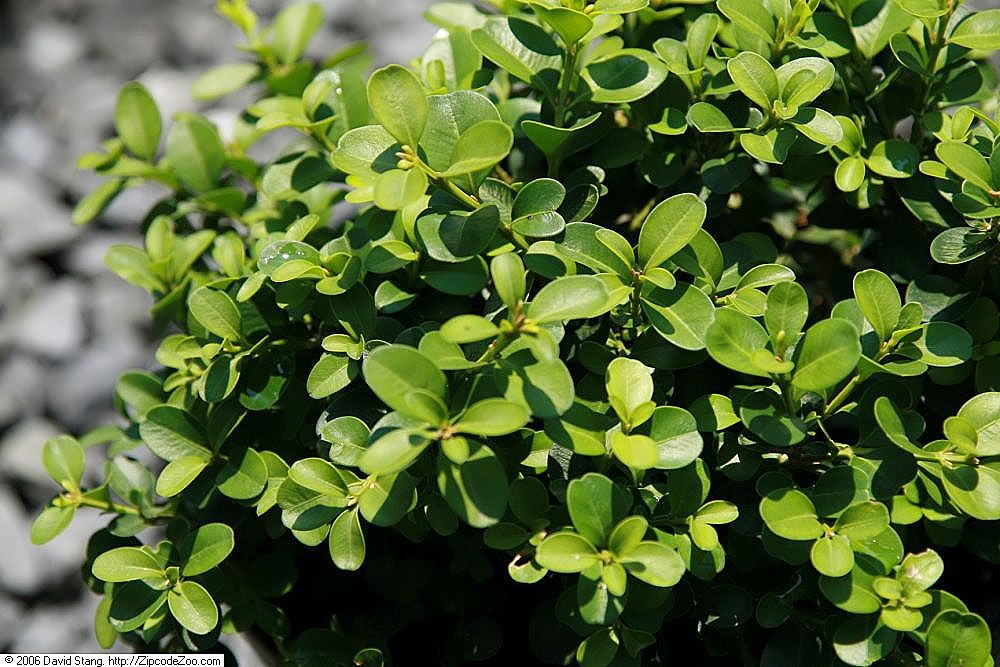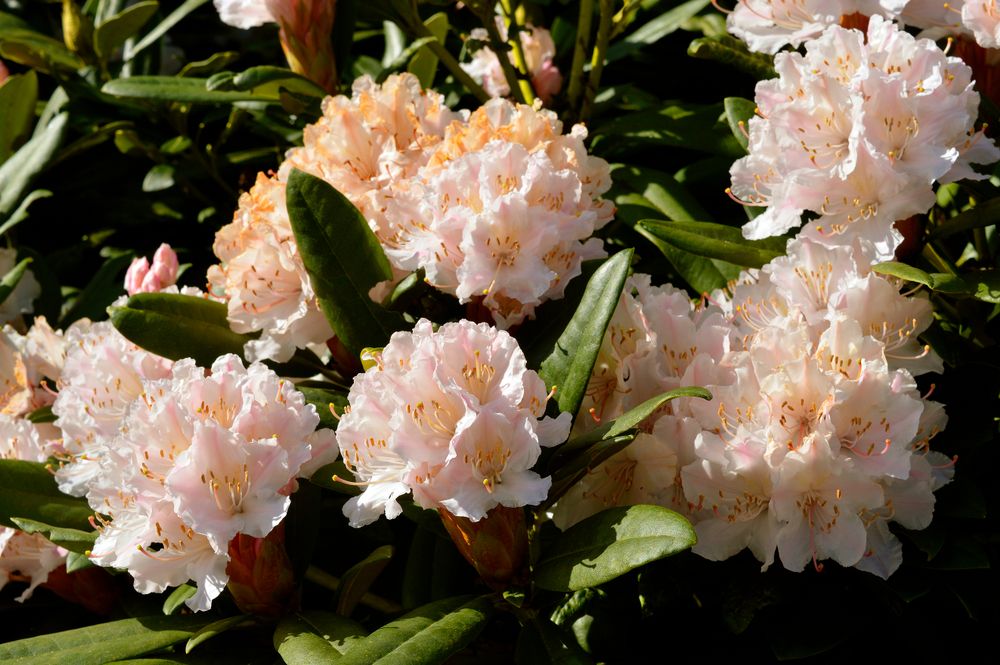The shrubs you plant around the foundation of your house are the first thing people see, so why not select ones with curb appeal? These shrubs are also functional since properly landscaping around your foundation provides structural integrity and prevents soil erosion.
Low-growing shrubs won't block views from your window; better yet, you can admire ones with beautiful flowers or foliage from outside year-round. When selecting shrubs, consider how much sun your yard gets since some prefer sun while others need shade.
Learn all about the best six shrubs for around your foundation and care tips to keep them happy and healthy.
Steeplebush
Image credits: MabelAmber via Pixabay
Steeplebush (Spiraea tomentosa L.) is a member of the rose family. The plant forms numerous lengthy stems with plumes of fluffy magenta flowers. The shrub's foliage turns yellow in the fall, while the bark is a vibrant, warm-toned reddish-brown and remains attractive year-round. It also attracts pollinators, such as butterflies and bees.
The deciduous shrub grows 2 to 4 feet in height and 3 to 5 feet wide and prefers full sun with moist, well-draining soil. Remove the flowers as they die and prune the plant back in fall or spring, removing old wood as the flowers only grow on new wood.
Wintercreeper
Image credits: Jack Blueberry via Unsplash
A mounding broadleaf evergreen shrub, wintercreeper (Euonymus fortunei) has rounded leaves with a green center and white or golden edges. It grows well as a shrub, vine, or even groundcover, depending on your needs. Many varieties are available, ranging from 6 to 24 inches tall, so it is excellent for placing under windows outside your home.
Hardy in zones 5 to 8, the wintercreeper shrub prefers full sun to partial shade and moist, well-draining soil. The plant tolerates occasional drought and continues to wow year-round with its unique, vibrant foliage and rounded shape.
Note: Some jurisdictions in the eastern United States consider wintercreeper invasive, so check your local reports before planting.
Forsythia
Image credits: pasja1000 via Pixabay
Forsythia suspensa, commonly known as weeping forsythia, is most popular for its arching branches that grow an abundance of petite yellow flowers. The stems of the deciduous shrub root when they touch the ground, so the plant easily widens and spreads as it grows. You can also train the stems to twirl and vine, easily adding more privacy or using the plant as hedging.
Forsythia grows to a height and width between 6 to 10 feet and prefers full sun to partial shade and well-draining soil. Prune immediately after flowering in spring, cutting back old stems to ensure the plant flowers again next year.
Hydrangeas
Image credits: Max_555 via Shutterstock
Hydrangea plants are a common addition to many gardens for a good reason. They are often used in garden beds, and you can even change the color of the blooms by adjusting the pH of the soil to create the perfect effect for your yard. Several types are available, though the Hydrangea paniculata 'Jane' (often sold as 'Little Lime®') is ideal for foundation planting because it only grows between 3 to 5 feet tall.
Hydrangeas generally bloom from summer through fall and prefer rich, loamy soil and full sun to partial shade. The attractive globe-like clusters of hydrangeas are perfect for featuring as the center of your garden, surrounded by evergreen plants, such as boxwood 'Green Pillow' listed below.
Pro Tip: Divide and transplant your hydrangeas in the fall to keep them growing happy and healthy. Also, prune your hydrangea to remove any dead or dying foliage to continue seeing beautiful blooms year after year.
Boxwood 'Green Pillow'
Image credits: David J. Stang via Openverse
Boxwood 'Green Pillow' is a broadleaf evergreen shrub that only grows about 2 to 3 feet tall and wide. The plant is slow-growing but boasts dense foliage and small, attractive bunches of green leaves. The shallow root system prefers slightly alkaline soil and the deep green leaves tend to turn a copper color in winter.
This boxwood plant does best in partial to full shade, as too much sun can result in scorched leaves. Remember to prune away dead or damaged foliage to improve circulation each year. But only do this after the last chance of frost has passed, as cool temperatures may damage new growth.
Pro Tip: Place boxwood 'Green Pillow' in a location sheltered from the wind, as it can easily uproot the shallow root system. Also, cool winds can cause the plant to become dehydrated.
Rhododendrons
Image credits: Peter Etchells via Shutterstock
Available in a variety of species, you can find rhododendron plants in several beautiful colored blossoms with tubular or bell-shaped shaped flowers. Rhodhdrenon 'Christmas Cheer' is a good choice for foundation planting since it grows to only 4 to 6 feet in height, featuring silky pink blossoms from February through March. The narrow olive-green leaves embrace each bloom and remain through the winter.
The plant grows best in acidic, organically rich soil and dappled sunlight. Deadhead flowers to keep it looking happy and healthy, and pinch back new growth for a bushier, fuller look. As a bonus, you might spot a few hummingbirds fluttering around the lovely pink flowers.
Ready, Set, Plant!
These shrubs are low-maintenance, beautiful, and functional for planting around your foundation. Some prefer lots of light, while others prefer partial shade, so what works for your space varies on how much light your yard gets. Whether they are evergreen bushes or flowering perennials, each of these shrubs is ideal for landscaping and increasing your home's curb appeal.
Do you know of any other shrubs perfect for planting around your foundation? Share in the comments below!

